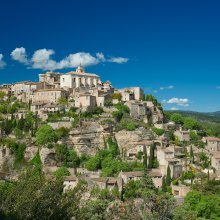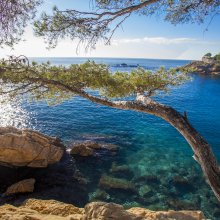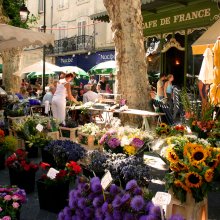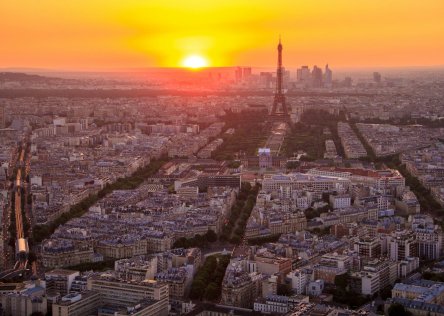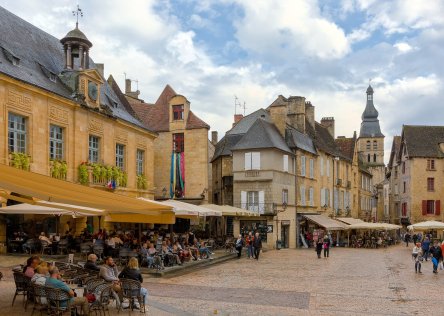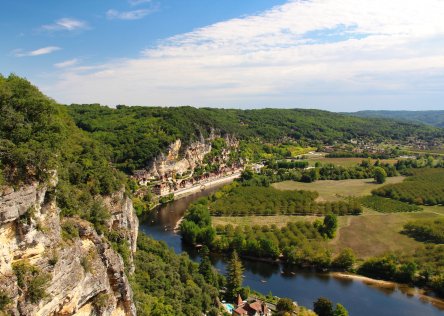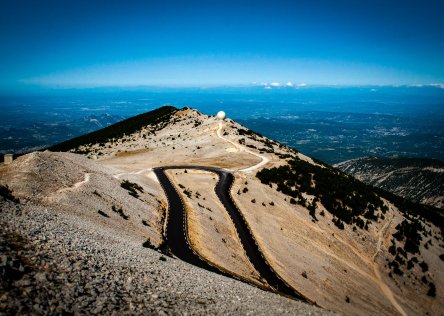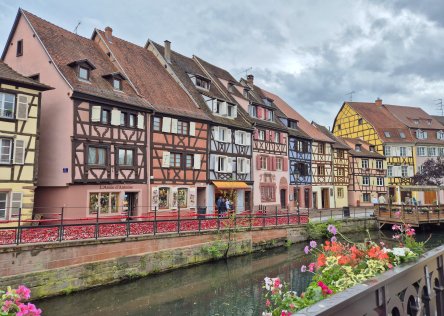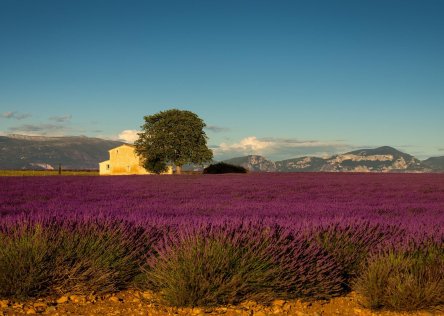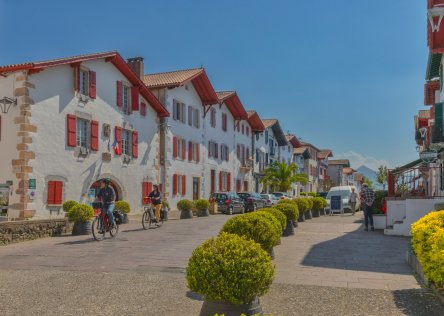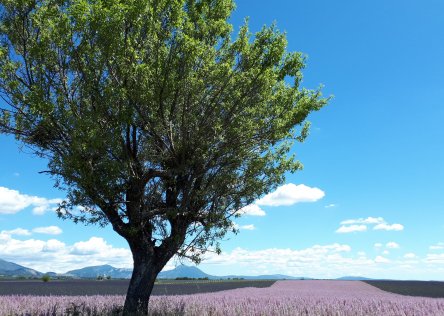If you’ve ever stood in front of a Van Gogh painting and wondered what the world looked like through his eyes, there’s one place in Provence where you can get remarkably close: Arles.
Arles’ Roman ruins, honey-colored light, and beautiful scenery inspired some of Van Gogh’s most iconic works - and you can still see many of the same views today.
Take a Van Gogh walking tour in Arles on one of our Provence tours, and you’ll:
- Wander the same narrow streets and sunlit squares the artist painted in his signature bold, swirling strokes
- Discover how the town’s everyday beauty sparked Van Gogh’s extraordinary creativity, as well as that of many other local and international artists
- Follow well-marked signs that match Van Gogh’s artworks to their real-life backdrops
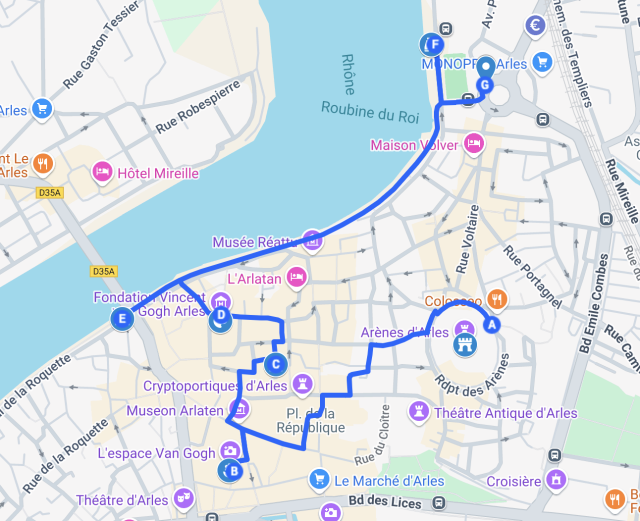
©
TIP: Look for Van Gogh trail signs showing the painting image next to the real view.
Roman Amphitheater (Arènes d’Arles) - Arena at Arles (1888)
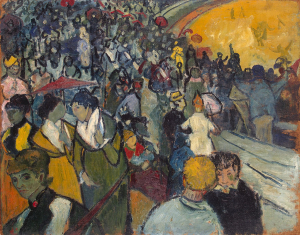
- Why visit
Van Gogh sketched these ancient walls and arches, drawn to their texture and the way light plays on the stone. One of his most famous depictions of the amphitheater was his painting 'Les Arènes', which he painted from memory in his studio at the Yellow House in Arles. - What to see
Walk around the exterior - notice the same curve of the walls and arch shapes that caught his eye. - Where to see the painting
The Hermitage Museum, St Petersburg
L'Éspace van Gogh - Garden of the Hospital in Arles (1889)
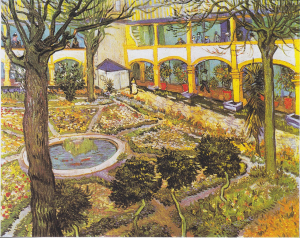
- Why visit
Van Gogh’s 'Garden of the Hospital in Arles' (1889) shows the plane trees and flowerbeds you’ll still find here today. He was a resident at the hospital for a short time in 1889, before transferring to the Saint-Paul de Mausolée Asylum in Saint-Rémy-de-Provence. - What to see
Wander the quiet cloister garden next to the foundation to find the same tree-lined paths and flower borders. Inside L'éspace van Gogh, there are temporary exhibitions featuring contemporary artists, and exhibitions linked to the region’s cultural heritage. - Where to see the painting
Oskar Reinhart Collection, Winterthur, Switzerland
Place du Forum - Café Terrace at Night (1888)
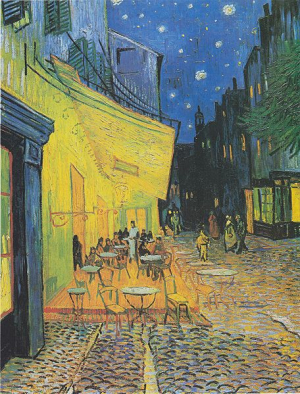
- Why visit
Van Gogh’s 'Café Terrace at Night' (1888) was painted right here, capturing the warm glow of the café against the darkened square. - What to see
Stand at the corner of Rue Favorin and the square to line up your view with Van Gogh’s canvas - look for the same archways and pavement patterns. At the time of writing, the café appears to be permanently closed, and is yet to be taken over by another owner. But you may pose and take photos, as many tourists do. - Where to see the painting
Kröller-Müller Museum, Otterlo (Netherlands)
Fondation Vincent Van Gogh Arles
- Why visit
This former hospital was Van Gogh’s idea of an artists’ retreat - his “Studio of the South.” - What to see
Explore the permanent exhibitions, which trace Van Gogh’s life in Arles and showcase contemporary works inspired by him. Occasionally, some of van Gogh's famous pieces are loaned to the Van Gogh foundation from the big museums around the world. However, typically you won't see much or any of van Gogh's original art here.
The Stairs of the Trinquetaille Bridge (1888)
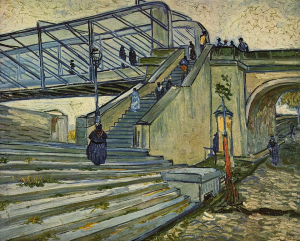
- Why visit
The stone steps beneath the bridge appear in his watercolor painting "The Bridge at Trinquetaille" (1888). - What to see
Cross the Rhône to find the same staircase and bridge structure that Van Gogh painted. - Where to see the painting
It is currently held in a private collection
Panorama du rivage — Starry Night Over the Rhône (1888)
- Why visit
From the Rhone riverside at dusk, Van Gogh captured gas lamps reflecting on the water under a star-filled sky in his piece Starry Night Over the Rhône (not to be confused with his more famous ‘The Starry Night’, which he painted in Saint-Rémy-de-Provence). - What to see
Head just west of the Pont de Trinquetaille at twilight to see the reflections of the lamps and stars as they might have appeared in his painting. - Where to see the painting
Musée d'Orsay, Paris
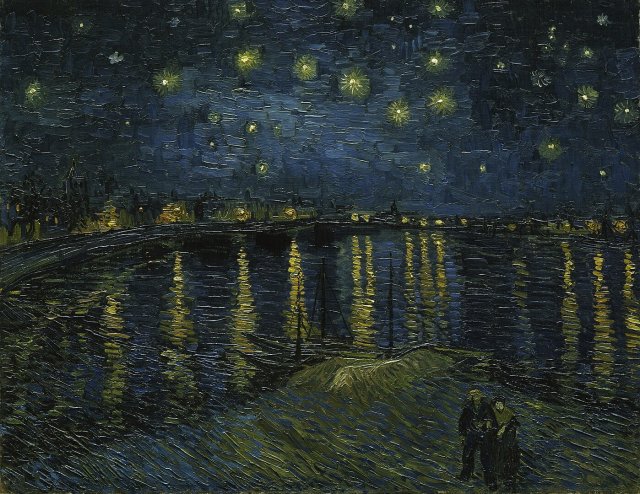
©
CC0
Place Lamartine - The Yellow House (1888)
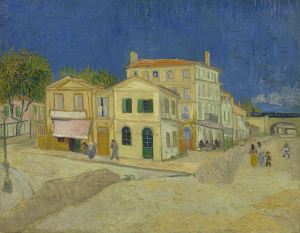
- Why visit
Van Gogh lived and worked in the Yellow House at 2 Place Lamartine from May to December 1888. He immortalized it in his painting 'The Yellow House.' - What to see
The original Yellow House no longer stands, as it was badly damaged during World War II and later demolished, but you can still visit the spot where it once stood. - Where to see the painting
Van Gogh Museum, Amsterdam
As these places are outside the town center, you may like to save them for another day or drive to them after your walking tour.
Les Alyscamps - Falling Leaves series (1888)
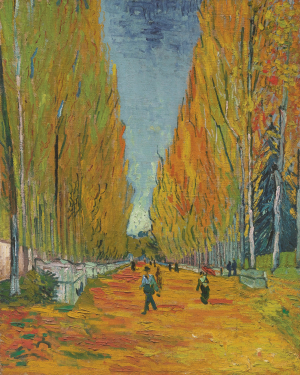
- Why visit
This poplar-lined Roman necropolis appears in several of Van Gogh’s works, with its play of light and shadow along the avenue. Artist Paul Gauguin joined him here to paint the poplar-lined Roman necropolis glowing in late-autumn tones. - What to see
Stroll beneath the plane trees and compare the real-life avenue to his paintings. - Where to see the painting
Private collection
Langlois Bridge
- Why visit
On the present-day Chemin de Maillanen, a short drive south of town, Van Gogh painted this wooden drawbridge in multiple studies, intrigued by its structure and moving parts. - What to see
Although the original bridge was moved, a faithful reconstruction stands here - look for the yellow carriage that appears in his scenes. - Where to see the painting
Wallraf–Richartz Museum, Cologne
Montmajour Abbey
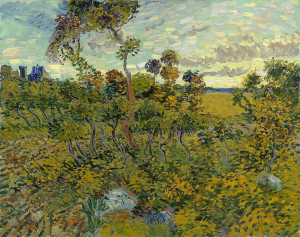
- Why visit
Van Gogh was drawn to the weathered ruins of Montmajour Abbey and its surrounding fields, which he painted in works like 'View of Montmajour Monastery.' - What to see
Drive or bike up to the hilltop abbey and take in the same panoramic outlooks that he captured on canvas. - Where to see the painting
Private collection, Norway
Tips for your walk
- Distance & time: ~3 km (1.8 mi) loop, about 2–3 hours at a leisurely pace.
- Best moment: Late afternoon into dusk—perfect for the “Starry Night Over the Rhône” spot.
- Trail markers: Look for Van Gogh trail signs showing the painting image next to the real view.
- Navigation: Download the official trail map at the Arles Tourist Office or use our free Google My Maps link.
- Enjoy seeing Arles through Van Gogh’s eyes—each stop brings his masterpieces to life against the same Provençal light he once painted.
Ready to plan your trip to Provence?
If you’re dreaming of wandering through fields of sunflowers (in bloom in late-June or July), tasting the local rosé wine, and seeing the landscapes that inspired world famous artists, we’d love to craft a self-drive itinerary of Provence - just for you.
Contact Emilie and Laura, or complete our trip-planning form below, and let’s plan your ideal French adventure together!
Send us your France trip-planning form
FAQ
When is the best time to visit Provence?
Provence is beautiful year-round, but we especially love traveling there in May, June, September, and early October. During these months, you’ll enjoy pleasant weather, vibrant colors, and a more relaxed pace with fewer crowds.
If you’re dreaming of seeing the lavender fields in bloom, plan your visit for late June to mid-July—or head to the higher-altitude village of Sault in late July or early August to catch the last of the lavender season.
For more information, check out our blog post on the best time to visit Provence.
You may also like to take a look at our Provence road trip post, or go straight to our Provence tours page.
Is Van Gogh’s Yellow House still in Arles?
Unfortunately, Van Gogh’s famous Yellow House no longer exists.
- The building was badly damaged during World War II and later demolished.
- However, you can still visit the exact location at 2 Place Lamartine, where a plaque marks the spot.
- It’s a powerful moment to stand where Van Gogh lived and painted during his most prolific period, and to imagine what he saw as he stepped out his front door.
We include this meaningful stop on our walking tour of Arles so travelers can truly follow in his footsteps.
Is Arles walkable?
Yes, very much so.
- The historic center of Arles is compact, mostly flat, and easy to explore on foot.
- You can comfortably visit the Roman amphitheatre, charming squares, local cafés, and Van Gogh sites without needing a car.
- Most of our travelers love how walkable it is. It allows you to take your time, soak in the atmosphere, and discover hidden corners you’d miss by car.
If you’re on one of our self-drive tours, we’ll give you parking tips and walking suggestions so you can enjoy Arles stress-free.
Is The Starry Night in Arles?
Not quite—but it’s a common (and understandable!) mix-up.
- Van Gogh painted “Starry Night” in Saint-Rémy-de-Provence, about 30 minutes from Arles. The painting is now in the Museum of Modern Art in New York
- In Arles, he painted the stunning “Starry Night Over the Rhône”—also under a starry sky, but with reflections of gas lamps dancing on the river. This painting is in the Musée d'Orsay in Paris.
If you’re interested in seeing both spots, we’ll happily include them in your itinerary. The night skies of Provence still work their magic today!
Is Arles worth visiting?
Absolutely—Arles is a gem we recommend to many of our travelers.
- It offers a wonderful mix of art, Roman history, Provençal charm, and walkable streets.
- Highlights include the Roman amphitheatre, the colorful Van Gogh walking trail, and peaceful spots like L’Espace Van Gogh, once the hospital where Van Gogh stayed.
- It’s also home to great markets, photo-worthy architecture, and authentic southern French atmosphere.
Browse our self drive tours of Provence if you feel inspired to visit!
What’s the difference between Starry Night and Starry Night Over the Rhône?
They’re both painted by Van Gogh and both feature starry skies, but they’re quite different in mood and setting:
- “Starry Night” (1889) was painted from Van Gogh’s window in Saint-Rémy-de-Provence while he was in an asylum. It’s the one with the swirling sky, cypress trees, and imaginary village.
- “Starry Night Over the Rhône” (1888) was painted in Arles. It shows a quieter, more grounded scene with stars reflected in the Rhône River, and two lovers strolling under the night sky.
If you’re interested in seeing the landscapes that inspired these works, we would be very happy to include them in your self-drive itinerary, so you can see the night skies just as Van Gogh did.


